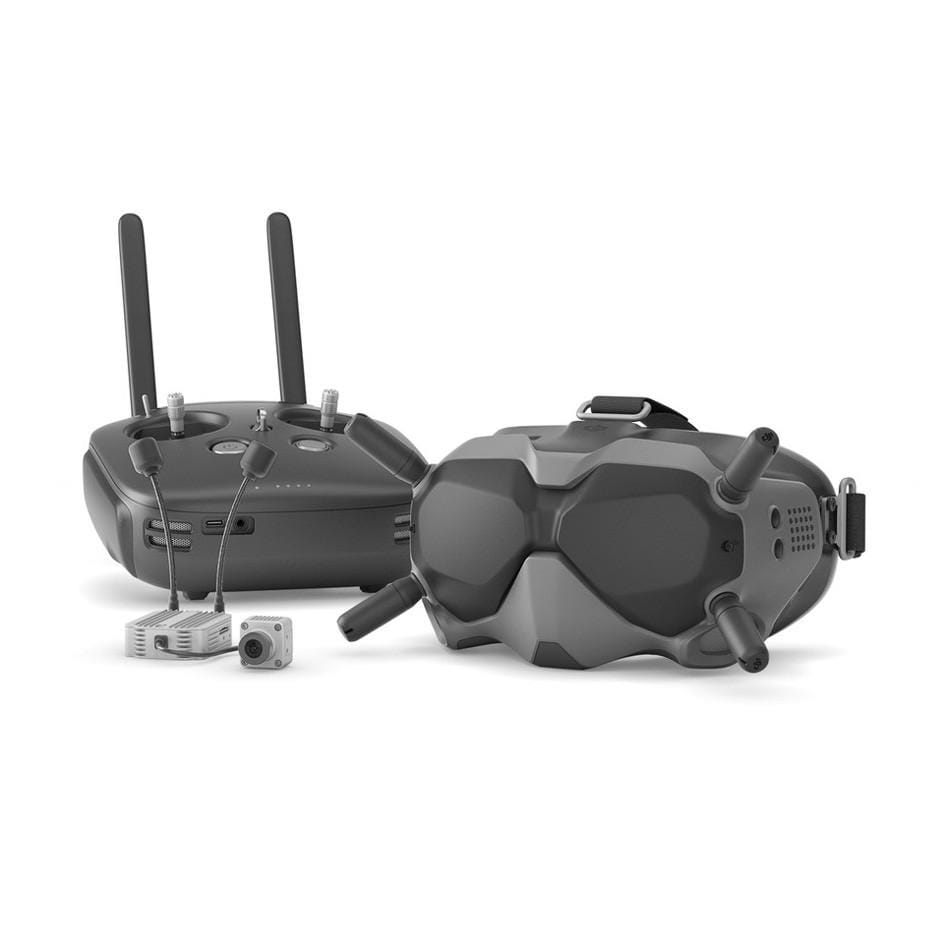

It depends a lot on the type of flying you do. Pilots disagree over whether this small difference matters. The 120fps cameras have lower latency of about 25 to 35 ms, while the 60fps cameras are more like 35-45 ms. The main distinction between cameras is whether they support 120fps or 60fps refresh rate. Bear in mind the larger Air Unit requires a larger frame, so the weight difference between the two ends up being more than just the 20 gram difference between the two vTX.
#Dji digital fpv system full size#
If you strongly prefer to have an on-board DVR, such as if you don’t plan to carry a GoPro, then the full size Air Unit would be your pick. For a typical freestyle build, most pilots prefer the Air Unit Lite.

It has 20mm mounting holes and will fit in the rear of most 5″ freestyle frames, as well as many smaller frames. The Air Unit Lite saves about 20 grams compared to the Air Unit and doesn’t have a built in DVR. There are two choices: the full sized Air Unit (Caddx calls this the Air Unit Micro), with two antennas and an SD Card slot, or the smaller Air Unit Lite (previously known as the Caddx Vista vTX). The cameras, on the other hand, are manufactured by Caddx and Runcam, and are not the same.įirst, you have to choose which vTX you want. They’re completely identical in every way, and we even suspect (but can’t prove) that the vTX are manufactured by DJI and just re-labeled as Caddx or Runcam. Whether you buy a Caddx Air Unit Lite or a Runcam Link vTX doesn’t matter. But the decision isn’t actually as complicated as it seems.įirst thing to keep in mind is that the video transmitters (vTX) are all identical. DJI has handed off distribution of the FPV system to Caddx and Runcam, meaning there are more products to decide between. Now, the situation has gotten more confusing. When the DJI FPV system first released, there was basically only one choice to make: which vTX do you want? The full sized Air Unit or the smaller Vista. But be careful, because you might find yourself pulling out your credit card when you didn’t mean to. So if you get the chance to try out the DJI system yourself, do it. Unfortunately, this is impossible to convey via a web page or YouTube video. The more I fly the DJI system, the more I love it, and the harder it is to go back to standard-definition analog. However, DJI has been adding more OSD elements in each firmware update, so this may change in the future.Īll that being said, the emotional impact of flying in HD is profound. This means some important troubleshooting information is not available. (You can still receive analog signals using a receiver module and the DJI goggles’ AV input.) Another drawback is that the DJI system can only show some of the flight controller’s on-screen-display information. If you’re using DJI goggles, your friends using analog goggles can’t watch your FPV feeds. The biggest caveat when deciding whether to buy the DJI FPV system is how it interacts with other pilots using traditional analog systems. (Aftermarket goggle foam can sometimes fix this.) There is light-leak around the bottom and nose, and some people find them uncomfortable to wear for long periods of time.

The DJI goggles are not a perfect fit for most people’s faces. The DJI system is bigger than an analog system, so installing it in a frame can be tricky (see below on this page for frames specifically designed to fit the DJI Air Unit and Caddx Vista). But a budget analog system can get you into the air for a fraction of the price. What are the drawbacks? Compared to a ultra-premium analog system, the DJI system is not too much more expensive. Everything about the system has the polish and performance that DJI customers have come to take for granted. The goggle screen is huge, bright, clear, and colorful. Setup and installation are simple, especially with new flight controllers that are designed for one-plug connection to the Air Unit. Latency is excellent at best and tolerable at worst. Range is about the same as typical 5.8 GHz analog systems, but in glorious HD resolution. The DJI digital high-definition FPV system is the first to actually make HD FPV “just work”. So why did we all use analog? Previous HD FPV systems all disappointed with excessive cost, high latency, unreliable link, and poor build quality. Until now, FPV pilots settled for a low-resolution, blurry image that turned into static when signal got weak.

DJI has finally brought FPV into the high-definition era.


 0 kommentar(er)
0 kommentar(er)
